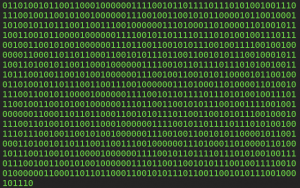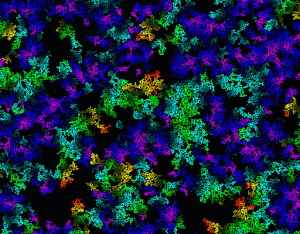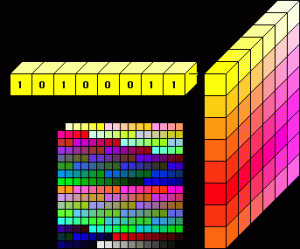What is pixelation? I think a lot in terms of photography and images because this is an interesting realm to me. Metrology is a field that allows for measurement through photography. Digital images are subject to errors, and pixelation is a part of this equation. The ability to measure images in terms of pixels is critical from interfacing between the physical environment and the digital realm.
Pixelation is caused by displaying a bitmap or a section of a bitmap on a large scale. This causes individual pixels to be visible. A pixel is a single-colored square display element that lies within a bitmap. A bitmap refers to a representation in which each item corresponds to one or more bits of information, especially the information used to control the display of a computer screen. A bitmap is a type of memory organization or image file format used to store digital images. The term bitmap comes from the computer programming terminology, meaning just a map of bits, a spatially mapped array of bits.
A bit refers to a basic unit of information. This information is applicable within information theory, computing, and various digital communications. Within the field of information theory, one bit is usually defined as the information entropy of a binary random variable that is 0 or 1 with equal probability. This can also be called the information that is gained when the value of such a variable becomes known. Information entropy refers to an average rate of production for a stochastic source of data.
Stochastic methods refer to techniques that involve the accounting of a random variable. A stochastic model is a tool for estimating probability distributions of potential outcomes by inputting the possibility of random occurrences over time. These random variations are usually based on different fluctuations from historical based data. This is all done over a selected period of time based on standard time-series techniques.
Stochastic methods are applied to metrology as various errors and random events may cause imperfect measurement. This is crucial to correct for natural human error as well as random environmental factors that are in need of consideration.
For all of those inclined, be sure to look into these thoughts and apply them to computers and quantum computing if you are interested. But how does this relate back to metrology? Simple answer: with information processing we are able to dissect images. With images, one can measure the environment. Pixelation however shows the conversion process of images from the physical realm to the digital realm. There are various representations of bitmaps and these affect the output of a digital image. These include:
- 2-bit
- 4-bit
- 8-bit
- 16-bit
- 32-bit
- 64-bit
- 252-bit
Bits within images are directly correlated to colors. For the number of bits one may take the squared number of this and this is how many colors found within the image. 2-bit refers to 4 colors, 4-bit refers to 16 colors, 8-bit refers to 64 colors, etc. Being able to accurately represent these color depths from the physical world to the digital world is still difficult.
Color and pixelation are important and highly challenging items to deal with. Metrology methods need to deal with these items if it wants to expand its measuring ability. In our next article, I will highlight through code how to show pixelation and how it is vital to 3D imagery.
The post What is Metrology Part 18 – Pixelation appeared first on 3DPrint.com | The Voice of 3D Printing / Additive Manufacturing.






